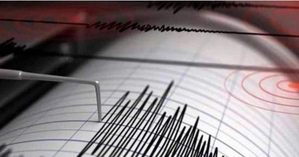Mild Earthquake Hits Bihar; Epicenter in Sikkim’s Soreng Area
By IANS | Updated: August 9, 2024 13:20 IST2024-08-09T12:57:12+5:302024-08-09T13:20:06+5:30
Patna, Aug 9: A mild earthquake hit Bihar’s Kishanganj and surrounding areas causing panic among the residents who rushed ...

Mild Earthquake Hits Bihar; Epicenter in Sikkim’s Soreng Area
Patna, Aug 9: A mild earthquake hit Bihar’s Kishanganj and surrounding areas causing panic among the residents who rushed out of their homes on Friday. An official of the National Center for Seismology (NCS) said that the earthquake measured 4.4 on the Richter scale which had its epicenter in the Soreng area of Sikkim just 10 km below the surface.
Sikkim is located in the high-risk seismic zone IV of the Indian seismic zoning map. The state is spread out on the Himalayan mountain range with two main thrust faults, the Main Boundary Thrust (MBT) and Main Central Thrust (MCT) crossing the state.
EQ of M: 4.4, On: 09/08/2024 06:57:08 IST, Lat: 27.22 N, Long: 88.33 E, Depth: 10 Km, Location: Soreng, Sikkim.
— National Center for Seismology (@NCS_Earthquake) August 9, 2024
For more information Download the BhooKamp App https://t.co/5gCOtjdtw0@DrJitendraSingh@OfficeOfDrJS@Ravi_MoES@Dr_Mishra1966@ndmaindiapic.twitter.com/AJtlScJuNA
The official said that fortunately there was no damage to any property and no loss of life reported anywhere in the area. “The mild earthquake occurred at 6:57 am IST. Despite the fear of aftershocks, the situation remained calm after the initial tremor,” the NCS official said.
He said that the earth’s structure is composed of four primary layers crust, mantle, outer core, and inner core. “The outermost layer, known as the crust, is around 50 kilometres thick and is divided into several large and small pieces called tectonic plates,” he said.
He said that these plates are constantly in motion due to the forces exerted by the semi-fluid layer beneath them, known as the mantle. “This movement is usually very slow and continuous, but sometimes the plates can get stuck due to friction,” the official said.
He said that when the stress on the edges of these plates overcomes the friction holding them together, it causes a sudden release of energy. “This energy radiates outwards in the form of seismic waves, which we experience as an earthquake,” the NCS official added.
Disclaimer: This post has been auto-published from an agency feed without any modifications to the text and has not been reviewed by an editor
Open in app